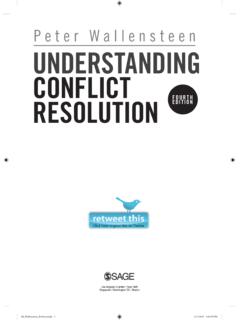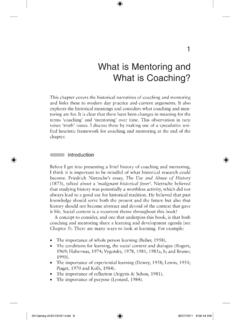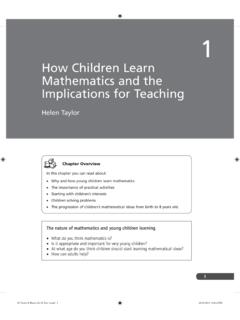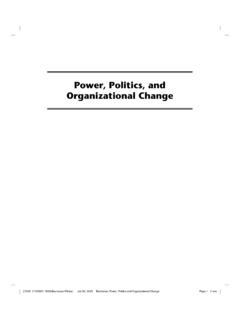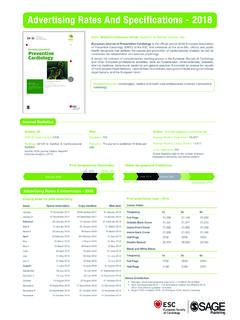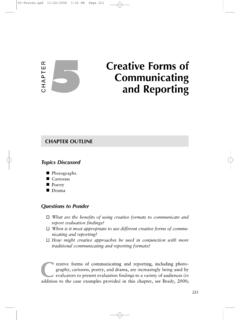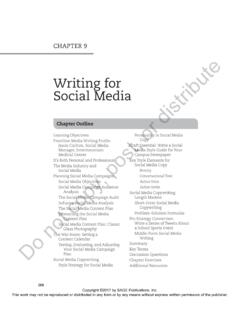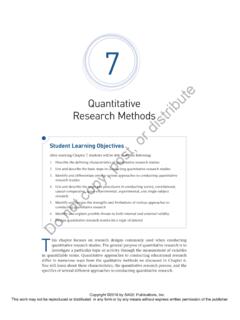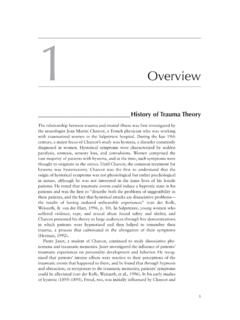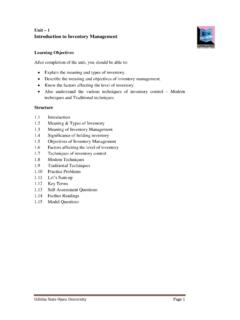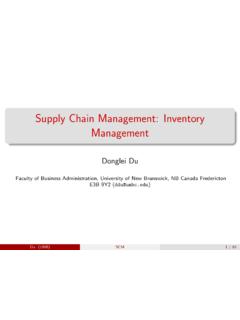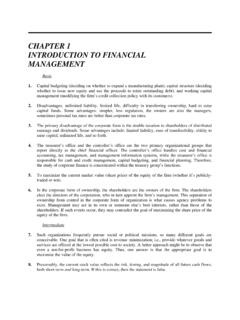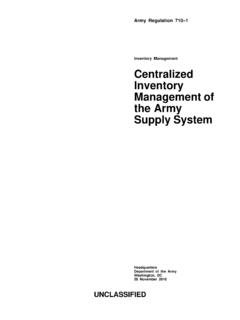Transcription of Introduction to Purchasing and Supply Chain Management
1 1 PART IIntroduction to Purchasing and Supply Chain ManagementChapter 1: Purchasing and Supply Chain ManagementChapter 2: Purchasing Decisions and Business StrategyChapter 3: The Legal Aspects of PurchasingCopyright 2021 by SAGE Publications, Inc. This work may not be reproduced or distributed in any form or by any means without express written permission of the publisher. Do not copy, post, or distribute2 LEARNING OBJECTIVESUpon completion of this chapter, the reader should be able Identify the role of the Purchasing manager, buyer, and Purchasing agent in an Describe the evolution of the Purchasing and Supply Management function as organizations become more Explain the relationship between the Purchasing function and inventory , ordering.
2 And transportation Explain the Purchasing function s contribution to Identify the relationship between the Purchasing function and other functional Identify the advantages and disadvantages of various Purchasing organizational Describe the reporting structures common in the Purchasing Identify careers in Purchasing and Supply Spruell, a junior at Abilene Christian University (ACU), is having a terrific college experience. She is an officer in her sorority and is a member of the marching band. But she still has no idea what she wants to do in 2 years. She figured she would go to graduate school so she could continue working with the band and sorority.
3 Basically, she wanted to remain at ACU for at least 6 more years. However, recently her parents made it clear they would only support her (financially) for the next 2 fall Asia enrolled in a course titled Purchasing and Supply Chain Management . It wasn t long before a light came on this is it! If I have to work for a living it should be in a profession with both chal-lenges and potential for great satisfaction .. Supply Chain manage-ment. It s a perfect way to enhance my relationship Management skills, and it s stimulating enough to provide the fulfillment I need! After this aha moment, Asia met with her councilor to change her major from accounting to Purchasing and Supply Chain Management .
4 And Supply Chain ManagementCopyright 2021 by SAGE Publications, Inc. This work may not be reproduced or distributed in any form or by any means without express written permission of the publisher. Do not copy, post, or distributeCHAPTER 1 Purchasing and Supply Chain Management 3 She plans to take the other courses in the PSM curricular. She also joined the Purchasing and Supply Chain Association (PSMA) and applied for a Purchasing s parents are visiting for Parents Weekend. Although she is certain she will pursue a career in Purchasing and Supply Chain Management , she would like her par-ents approval. Both of her parents are accountants, and they expected Asia to follow in their footsteps.
5 If you were Asia, what arguments would you present in favor of your decision?intrOductiOnAfter millennia of unchallenged success, business and governments around the world entered a new era of unprecedented openness. Three powerful forces underlie this trend: economics, technology, and zeitgeist (the mood of the time period). Global economies have become tightly integrated, enabling faster economic growth; the World Trade Organization lists 295 regional trade agreements presently in force. Yet, a decade ago, the entire world experienced a deep recession, causing some to raise new questions on the value of these supranational ties.
6 The Internet has revolutionized the speed and power of data analysis and dissemination. Yet the unique scale of data collection has also led to new concerns about privacy and data general, the business world has become increasingly interconnected. Financial crises in one region of the world now have profound effects on the economies of other Management professionals must learn to adapt to new sources of Supply Chain uncertainty. The European Union (EU) is just one example of global uncertainty that is now affecting firms. There is a high level of direct investment and trade between the EU and the world s two largest economies ( , the United States and China).
7 Many American firms have subsidiaries and business partners located in the United Kingdom, and these companies served as portals into the European Single Market (within which there is free movement of goods, capital, services, and labor). In 2016, the United Kingdom voted to leave the EU, an event known as Brexit or British exit. How Brexit will unfold, and which firms will be affected, remains uncertain today. Journalists and commentators speculate that the United Kingdom s currency will fall dramatically, that firms will relocate from London to Frankfurt or Paris, and that tensions in Ireland might boil over again as they did in the manage Supply Chain risk, we must first determine specifically where the risk exists in the Supply Chain .
8 Any companies with footprints in the United Kingdom must evaluate and adapt their Supply Management function based on the realities of Brexit. More generally, any company with a global footprint must evaluate and adapt its Supply Management function based on the global uncertainties to which it is exposed. An effective Supply Chain organiza-tion with critical and strategic suppliers and customers in a vulnerable or changing part of the world must devise plans for qualifying alternative strategic Supply Chain relationships. Keep-ing a watchful eye on inventory levels and conducting site visits is broadly certain industries, Asian manufacturers dominate the consumer market.
9 Nations in Central and South America and Southeast Asia continue to attract manufacturers seeking low wages for laborious tasks. In the midst of this changing world, the United States Copyright 2021 by SAGE Publications, Inc. This work may not be reproduced or distributed in any form or by any means without express written permission of the publisher. Do not copy, post, or distribute4 PART I Introduction tO Purchasing and Supply Chain ManageMentis a giant consumer base with an enormous command of technology, but one steadily losing the infrastructure needed to create addition to significant events that have impacted the world s business environment, individual firms have had to change radically in response to burgeoning technologies.
10 His-torically, the Management of materials and component parts was the most neglected element in the production process. Only when the cost of materials and subassemblies increased did Management attempt to investigate alternative methods to the planning and control of the acquisition and transformation functions in the organization. Instead, most firms emphasized minimizing the cost of capital and labor. The focus on labor was logical because the industrial revolution had generated many labor-intensive manufacturers. Producing large standard-ized batches represented the norm for some manufacturers. Some firms have embraced new technologies and invested in technology-driven manufacturing systems.
